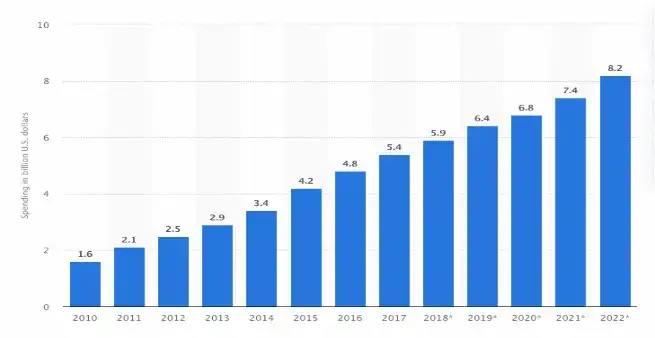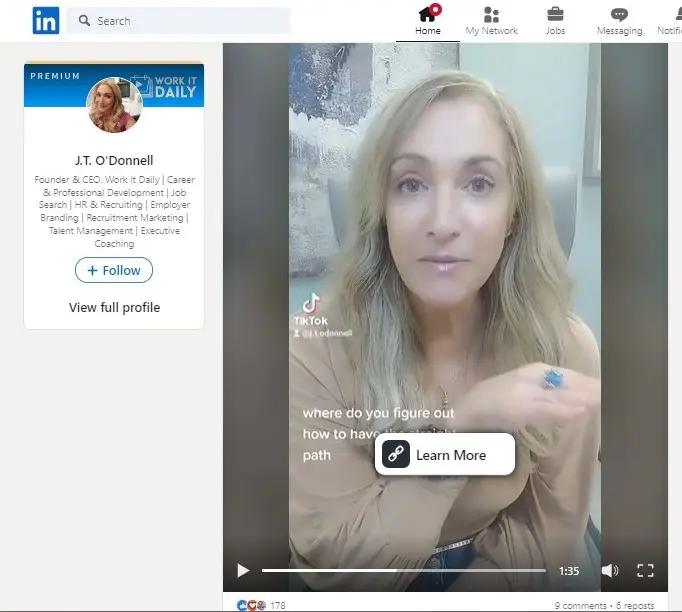Embarking on the journey of affiliate marketing without the burden of upfront costs might seem like a far-fetched notion in a world that often echoes the adage, “it takes money to make money.” Yet, rest assured, what follows isn’t a gimmick or a clever ploy. Wondering how to start affiliate marketing with no money?
The reality is, you can genuinely dive into the realm of affiliate marketing without spending a dime. Commonly, people associate affiliate marketing with startup expenses like web hosting, paid advertising, and tracking software—tools designed to fine-tune your campaigns. Contrary to this perception, all you truly require to commence this venture is a device with internet access, something you inherently possess; otherwise, you wouldn’t be perusing this text.
Still skeptical? Allow me to guide you through the process of launching your affiliate marketing journey sans any financial investment.
Is it possible to start affiliate marketing with no money?
Can you truly start affiliate marketing without any financial investment? Absolutely.

Now, what about websites? Traditionally, they come with costs attached, right?
Surprisingly, you don’t necessarily need a website when initiating your affiliate marketing journey unless you’re diving into blog content creation. Social media platforms prove to be highly effective channels, with a significant 67.32% of affiliate marketers leveraging them.
If, however, you’re a blogger or simply desire an affiliate site, consider this: web hosting platforms such as WordPress offer free plans for website creation and hosting. Even better, you can fashion an affiliate website using a free website builder.
But what about advertising costs? PPC (pay-per-click) and social ads undoubtedly drive traffic effectively, yet there are alternative routes. Organic traffic generation through content marketing and search engine optimization (SEO) is a valuable, albeit time-consuming, approach. The payoff? A more sustainable solution that allows you to fortify brand recognition and establish authority.
Here’s the key insight: You don’t necessarily need funds to share valuable content and promote affiliate links. As commissions start rolling in, you’ll find yourself with the means to scale your affiliate marketing efforts.
In essence, the journey begins without an immediate monetary commitment, and the initial steps can be taken with strategic planning and leveraging free resources.
Overview of No-Cost Affiliate Marketing Initiatives
| Aspect | Strategy |
| Website Creation | Utilize free plans on platforms like WordPress or opt for a free website builder. |
| Advertising | Consider organic traffic through content marketing and SEO, alongside PPC and social ads. |
| Scaling Efforts | Reinvest earned commissions to gradually expand and enhance your affiliate marketing endeavors. |
Remember, success in affiliate marketing without upfront costs is achievable with the right approach and resourceful utilization of available tools.
Steps to start affiliate marketing with no money
The doors to becoming a successful affiliate marketer swing wide open, and intriguingly, the path doesn’t demand a financial entry fee. However, it’s crucial to acknowledge that while money may not be a prerequisite, there are other invaluable resources you’ll need to invest – your time, creativity, and patience.
1. Choose your marketing channels
Embarking on affiliate marketing with a zero-budget approach naturally directs your focus to the vast landscape of popular social media platforms. Despite the initial limitations, the sheer magnitude of the audience within these platforms is staggering—4.48 billion social media users create an expansive space ripe for attracting potential customers and earning a steady affiliate income.
While the temptation to utilize every platform is understandable, practicality advises otherwise. Theoretically, such an approach could maximize your reach, but in reality, it becomes an impractical endeavor. Why? Because each social media platform possesses its distinct format, and crafting tailored content for each audience becomes a demanding full-time task. What thrives on TikTok might not resonate on Facebook, and the dynamics of promoting affiliate products on Pinterest resemble more of an SEO strategy than anything else.
Instead of spreading yourself thin across every platform, a more effective approach is to designate one platform as the primary hub for your affiliate content. This allows you to channel your efforts and resources efficiently. The other platforms then serve a supporting role, enhancing the visibility and reach of your core content.
Now, let’s delve into the unique landscape of affiliate marketing on some of the most popular social networking platforms:
YouTube: The Power of Video Content

YouTube stands out as an exceptional platform for affiliate marketing due to its dominance in video content, driving a substantial 82% of internet traffic. The added advantage is the ability to optimize videos for search engine results pages (SERPs). Content creators can also monetize through ads, providing funds to reinvest in their affiliate business. The platform’s description section allows clickable affiliate links, enhancing the potential for conversions.
Instagram: Navigating Link Limitations

Instagram’s evolution includes three video formats, yet its limitation lies in sharing affiliate links directly in posts. With only one clickable link in the bio, affiliate marketing on Instagram requires strategic maneuvers. Options include utilizing Instagram Stories with external links through features like the link sticker or employing free linking tools such as Linktree or Unfold to create landing pages with multiple links.
Facebook: Capitalizing on a Vast Audience

With nearly 3 billion monthly active users, Facebook is a powerhouse for affiliate marketing. Marketers can seamlessly incorporate affiliate links in posts and comments. To optimize effectiveness, it’s advised to create a dedicated Facebook page or group rather than bombarding personal profiles with marketing content. Alternatively, transforming a personal account into a business page is a viable strategy.
LinkedIn: B2B Marketing Haven

LinkedIn, catering to professionals, is ideal for B2B marketing. The platform offers diverse placement options for affiliate links, including blog posts, personal updates, company posts, and direct messages. Recent updates even allow link placements on photos and video content.
Twitter (formerly X): Concise Communication

Twitter, with its character limit of 280, demands concise and eye-catching posts. Despite its brevity, content creators can effectively share affiliate links, as exemplified by the succinct approach of popular content creator Wario64.
TikTok: Capitalizing on Short-Form Content
TikTok thrives on short video clips, fostering a personalized and authentic approach. However, the limitation of non-clickable links in descriptions necessitates housing affiliate links on a bio page.
Strategic Considerations for Success
The choice of the platform dictates your content strategy, but it’s your customers who determine where you should post. Aligning your content with your audience’s preferred platforms is essential to avoid wasting affiliate marketing efforts. Always include appropriate disclosures to inform your followers about affiliate links, ensuring transparency in your posts.
In the ever-evolving landscape of affiliate marketing, strategic utilization of these social platforms can amplify your reach and drive affiliate success.
2. Choose a niche
In the realm of affiliate marketing, your journey begins with a crucial decision: choosing the right niche. A prevalent misstep among novice affiliate marketers is attempting to sell products spanning diverse niches simultaneously. Imagine buying dog food from a craft shop – it simply doesn’t align. Just as customers wouldn’t trust online security tips from a skincare blogger. The key? Dedicate yourself to a single niche.
1. The Power of Niche Consistency:
Focusing on a specific niche offers a trifecta of benefits – credibility, authority, and trust among your target audience. This singular dedication allows you to become an expert, fostering a deeper connection with your audience.
2. Factors for Niche Selection:
Choosing the ideal niche involves a thoughtful analysis of several factors:
- Your Interests: Identify niches that align with your passions and interests. Promoting products you are knowledgeable or passionate about makes the process more authentic, and you’re already familiar with your target audience.
- Profitability: Research the most profitable markets. Technology, travel, and finance are perennial favorites. Dive deep into understanding these audiences – their content consumption habits, top influencers, and preferences.
- Demand: A niche may be profitable, but there must be demand for the affiliate products you intend to sell. High-paying commissions are futile if the products lack consumer interest.
- Competition: Strive to strike a balance between low competition and high audience interest. Niches like fashion may be popular but are saturated with affiliates and influencers, requiring substantial creative and financial efforts to remain competitive.
3. A Strategic Approach to Niche Selection:
Ideally, your chosen niche should:
- Align with your personal interests.
- Demonstrate growth potential.
- Have limited saturation to avoid competing with major media brands.
- Prove profitable for sustainable affiliate success.
4. Crafting Your Unique Path to Affiliate Success:
In an era where social proof steers purchasing decisions, being an engaged affiliate provides a distinct advantage. Recommendations based on personal experience elevate your credibility, setting you apart in a crowded market.
3. Join an affiliate program
The next crucial step after choosing your niche is to align with the right affiliate program. Here’s your comprehensive guide to seamlessly navigating this pivotal phase.
1. Identifying Lucrative Affiliate Programs:
Once your niche is established, uncovering the best affiliate programs becomes a strategic endeavor. Employ one or more of the following methods:
- Search Engines: Conduct targeted searches for affiliate programs within your niche using preferred search engines.
- Affiliate Networks: Join reputable affiliate networks, such as ShareASale, which offer a centralized platform to explore diverse programs. While some networks may have transaction fees, many, like ShareASale, have no entry charges.
- Observing Fellow Affiliates: Analyze the programs promoted by successful affiliates in your niche for valuable insights.
- Brand Exploration: Explore whether brands akin to those you intend to promote have existing affiliate programs.
2. Critical Considerations in Program Selection:
Choosing the right affiliate program involves a careful evaluation of key factors:
- Brand Reputation: Opt for programs associated with reputable brands to enhance your credibility and trustworthiness.
- Commission Structure: Scrutinize the commission models offered – pay-per-click and pay-per-sale – and align them with your marketing strategy.
- Product Demand: Ensure the affiliate programs cater to products with a substantial demand within your chosen niche.
3. Commission Models Unveiled:
Understanding the two primary commission models is crucial:
- Pay-Per-Click (PPC): Earn commissions for directing traffic to the brand’s website, irrespective of whether a sale occurs.
- Pay-Per-Sale (PPS): Commission is earned only after a successful sale resulting from the affiliate’s efforts.
4. Delving Into Payment Terms:
Beyond commission rates, deciphering payment terms is paramount:
Frequency: Clarify the payment frequency – whether it is monthly or triggered upon reaching a specified threshold.
5. The Quest for Financially Sound Programs:
While pursuing affiliate opportunities, prioritize programs that resonate with your financial goals. Uncover programs that align with your niche, offer competitive commissions, and boast a favorable payment structure.
In essence, the journey towards affiliate success involves meticulous program selection, ensuring a seamless alignment with your niche and financial aspirations.
4. Use the right keywords
The strategic use of keywords emerges as the linchpin for steering your content directly into the gaze of your intended audience. Let’s explore the nuances of incorporating the right keywords, ensuring not only visibility on search engines but also an amplified presence on social media platforms.
1. The Essence of Strategic Keyword Integration:
Embarking on a journey to captivate your target audience necessitates aligning your content with their search terms. Imagine someone on the quest for keto recipes; their search might include terms like ‘keto,’ ‘keto meal plan,’ or ‘what to eat on keto.’ Integrating these phrases strategically ensures your content surfaces when it matters most.

2. Keywords as SEO Dynamo for Bloggers:
For bloggers, keywords are the unsung heroes, wielding the power to make content visible on search engines. Beyond the realms of search engines, these versatile tools extend their influence to social media platforms, seamlessly transforming into hashtags.

3. Decoding the Art of Keyword Discovery:
Understanding which keywords your audience uses is a meticulous process that unfurls through the lens of keyword research software. Given the context of initiating affiliate marketing endeavors with minimal investment, we unveil cost-effective methods to embark on this exploration.
- Google Search Magic: The journey commences with a simple Google search. Enter a keyword, say ‘Keto,’ and witness the revelation of ten related search terms. These phrases are not arbitrary; they represent actual user queries, providing invaluable insights into popular search trends.
- Social Media Sleuthing: Extend this method to social media platforms. Exploring the related hashtags for #keto on Instagram not only unravels popular search terms but also provides a glimpse into their popularity based on post count.

4. Competitor Analysis: A Strategic Insight:
Elevate your keyword game by delving into how competitors weave these linguistic gems into their content. Scrutinize their use in headings, descriptions, and tags, unraveling a strategic roadmap for your own keyword integration.
5. Harnessing Free Keyword Research Tools:
In the realm of cost-free excellence, tools like Moz Keyword Explorer and Ubersuggest emerge as guiding lights. Offering insights into search volumes, SEO difficulty, and alternative keyword suggestions, these tools empower you to refine and amplify your keyword strategy.
In essence, the mastery of keywords is an art form that propels your affiliate marketing journey. By strategically weaving these terms into your content, you not only enhance visibility but also resonate authentically with the language of your target audience.
5. Create relevant and engaging content
The cornerstone of success lies in the creation of content that not only resonates with your audience but also captivates their attention. Let’s unravel the intricacies of producing high-quality content that not only stands out but also aligns seamlessly with your target audience.
1. The Power of Quality Content:
With the right keywords at your disposal, the focus shifts to ensuring the content you present to your audience is nothing short of exceptional. Content marketing transcends mere information delivery; it’s a profound act of providing genuine value to potential customers.
2. Pillars of Quality Content:
Quality content, the beacon that attracts both search engines and social platforms, is characterized by three essential attributes:
- Relevance: Address the pain points of your audience, making your content profoundly relevant to their needs and interests.
- Engagement: Craft content that is not only informative but also easy and enjoyable to consume. Steer clear of excessive technical jargon, fostering a connection with your audience.
- Attractiveness: Present your content in a visually pleasing manner. Utilize catchy titles, harmonious color schemes, and simple layouts to enhance the overall appeal.
3. Platform-Specific Content Strategy:
Tailor your content marketing strategy to align with the preferences of the platform you choose. Whether it’s YouTube, blogs, or social media, understand where your audience congregates and repurpose your content accordingly. The goal is to meet them where they are.
4. Decoding Search Intent:
Dive deep into the realm of search intent, a pivotal aspect that often defines the success of your content. When users type specific keywords, they have a distinct intent. For instance, ‘GetResponse vs Mailchimp’ signals a quest for product comparison, while ‘GetResponse review’ hints at a desire for an in-depth guide.
5. Crafting Content Aligned with User Intent:
Analyze the existing content ranking for your target search terms to decipher user intent. Armed with this knowledge, craft content that seamlessly aligns with the expectations and needs of your audience.
Pro Tip: Content Types that Convert:
Certain types of content wield greater conversion potential. Embrace formats like “Comparisons,” “Reviews,” “Best of” listicles, and “How to” guides. These content types inherently resonate with users, offering valuable insights and fostering a higher conversion rate.
6. Scale it up & Keep up with audience engagement
Discovering effective traffic channels marks the initial triumph in your budget-friendly affiliate marketing venture. Now, the focus shifts to scaling your efforts intelligently. Concentrate on amplifying content and promotional methods that prove fruitful, while swiftly discarding those that don’t measure up. To bolster productivity, consider enlisting the expertise of professionals like writers, video editors, or social media managers. Platforms such as UpWork and Fiverr offer cost-effective solutions for finding the right assistance. The hiring process may require iterations, but the time saved by the right individual is a valuable investment.
Venturing into platforms like Fiverr to secure freelance assistance for content creation is a savvy move. Prioritize individuals with positive reviews, ensuring authenticity by delving into recent feedback. Mean while, recognize that customer engagement isn’t merely a component—it’s the linchpin of a thriving affiliate strategy. Promptly respond to comments and inquiries to showcase dedication to audience satisfaction.
Consistency emerges as a vital element in customer engagement. Timely responses not only nurture relationships but also signal to search engines and social network algorithms that your online presence is active. The more active you are, the more visibility you accrue, solidifying your standing in the dynamic realm of affiliate marketing.
In closing – How to start affiliate marketing with no money
Congratulations! You’ve just unlocked the secret to launching your affiliate marketing venture without spending a dime. No tricks, no hidden clauses—just a straightforward 6-step guide.
We’ve explored free platforms, tools, and tactics, including handy solutions like keyword research software and affiliate networks that do the heavy lifting for you.
Remember, starting with no money doesn’t mean operating without any costs. As your affiliate business grows, expenses will arise, but you can cover them seamlessly from your incoming commissions.
Now that financial barriers are out of the picture, what’s holding you back? With a blend of time, creativity, and patience, you can kickstart a successful affiliate marketing business today. The journey begins without costs, and as you scale, the potential for significant returns awaits. Seize the opportunity and embark on your affiliate marketing triumph!
How to start affiliate marketing FAQ
What are the top 5 affiliate marketing networks in 2024?
As of 2024, the top five affiliate marketing networks include:
- Affiliate Future
- AvantLink
- CJ (Commission Junction)
- ClickBank
- FlexOffers
How can I make $100 a day affiliate marketing?
Earning $100 a day in affiliate marketing requires consistency and strategic planning. Create engaging content that resonates with your audience, choose high-paying affiliate programs, and employ various promotional channels. Over time, as you build trust and drive targeted traffic, achieving this income goal becomes feasible.
Can you start affiliate marketing with no money?
Starting affiliate marketing with no money is possible. Utilize free platforms like social media or YouTube to reach your target audience. While building a website can incur costs, leveraging these free channels allows you to kickstart your affiliate marketing journey without upfront expenses.

